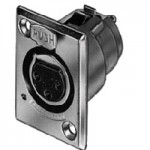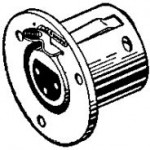Recent responses to an older blog posting about using XLR connectors on speaker cables caught me by surprise. It got me thinking about how ongoing evolution in this connector system has allowed it to stay relevant through generation after generation of audio development.
The XLR connector was first developed by James Cannon at ITT and was introduced to the audio market in 1958. Amazingly, through all the changes in connector standards and component wiring, the XLR is still the audio standard for microphone and patch cables.
One reason for its long life is that the basics of the design, much like good computer software design, have moved into the public domain. Anyone who has a better idea can bring their own version of the XLR connector to market.
A simple innovation developed by the Switchcraft company is an example of this design concept.
Cannon’s design for the XLR was for a round connector-a good idea since it fit well to a round cable and allowed the cable to be dragged along the floor without catching and tangling. Cannon’s concept called for both round body connectors on the cable and a round body “chassis mount” connector-the mating female connector found on the equipment or multicable box that the cable connector mated with.
A simple innovation by Switchcraft-changing the body shape of the panel mount connector from round to rectangular-meant that more connectors could be mounted side-by-side in a confined space since they could now fit edge to edge. You can see the value of that design change today by comparing a contemporary audio mixer to one built in the 1960’s or ’70’s.


Many minds contributing to the evolution of the XLR connector means that it will remain the audio industry standard for many years to come.
